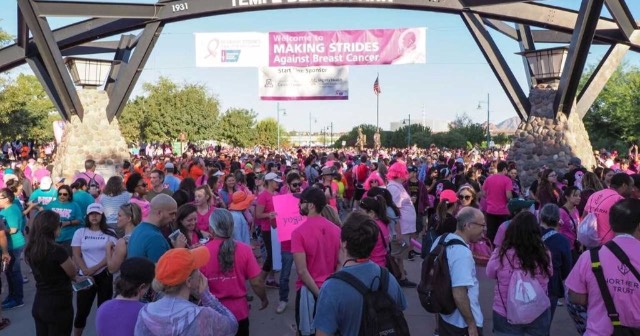By: Victoria Calvillo
Cancer is a very serious and physically/emotionally draining diagnosis. According to National Cancer Institute, in the United States alone about 1.7 million people would be diagnosed with a type of cancer, and about 6,000 would die from the disease in 2016.
The National Breast Cancer Foundation (NBCF) defines breast cancer as, “Breast cancer is a disease in which malignant (cancer) cells form in the tissues of the breast.”
The National Cancer Institute also mentions that breast cancer is one of the most common types of cancer to be diagnosed in the United States, along with lung, prostate, bladder, and several more.
The Huffington Post states that a mammogram is the best way to screen women for breast cancer. It is recommended that women about the age of 40 should consult with their doctor if they should begin getting screened. Women 50 and over should be screened every other year.
The only reason they do not recommend getting screened annually is because cancer can be slow growing, and there would be too many patients diagnosed with breast cancer that will not cause them any harm for several years.
However, there is some light in between all of the darkness of the disease. There are several treatment options that can help reduce the cancer from getting worse. Thanks to cancer research, there are many types of treatments to choose from.
Mayo Clinic mentions that there are several treatments when it comes to breast surgery, such as lumpectomy, chemotherapy, and radiation therapy.
A lumpectomy is very different from a mastectomy. It includes surgically removing the cancer or any other foreign tissue from the breast. This is where only a small portion of the breast is removed, whereas a mastectomy is where the whole breast is removed.
Chemotherapy is the most well-known type of treatment, as it is used for different kinds of cancer. Chemotherapy involves certain drugs being injected into the body, usually through a vein, in the hopes it will kill the cancer cells that may have spread throughout the body.
Another type is radiation therapy. This treatment involves a high-energy X-ray that attempts to kill the cancer cells, as well as shrink growing tumors.
All treatments chosen depend on each individual situation, and patients go through extensive consultations in order to choose the best treatment for their unique diagnosis.
Breast cancer affects both genders, but is more common in women than in men. NBCF states that breast cancer effects men and women around the globe, and is seen in all classes of countries.
Statistics found on the Foundation’s site show one in eight women will be diagnosed with breast cancer in their life. Some more facts include that breast cancer is the second most cause of death for women, almost every two minutes a woman is diagnosed with it, and that there are about 3.3 million breast cancer survivors currently in the United States.
Katie Huettle, sophomore elementary education major, states that she had a high school teacher, who is a breast cancer survivor. Survivors are modestly scattered all across the world. Huettle states that it is not easy to spot a survivor as she did not realize her teacher was a survivor until she saw her at an event for breast cancer awareness.
“It wasn’t obvious to me until she told me she had breast cancer. Cancer isn’t obvious in general,” said Huettle.
The detrimental disease can be very stressful for the patient, not just physically but also emotionally. Antonio Laverghetta, associate professor of psychology, adds that the first reaction to being diagnosed could be similar to the grieving process.
“There are different stages to the response. Some people might deny it initially, or even down play the diagnosis,” said Laverghetta. “At first someone might deny certain things about it, try not to accept the reality of the situation.”
Laverghetta also adds tha some coping mechanisms are better than others.
“For some people it might make them stronger in some ways too. They might potentially value the gift of life more, opposed to taking it for granted,” Laverghetta said. “Some folks might join message boards or support groups to talk about their experiences with other people, and that could help with the denial problem too.”
Oct. is breast cancer awareness month, with pink being the color to represent the specific cancer. It affects millions worldwide, and there are many organizations that are set up to support the diagnosed. The thought is that no one has to fight the disease alone. There are many treatments that are able to fight off the cancer in the hopes that the cancer will be downgraded enough to be able to call the victim a survivor.





